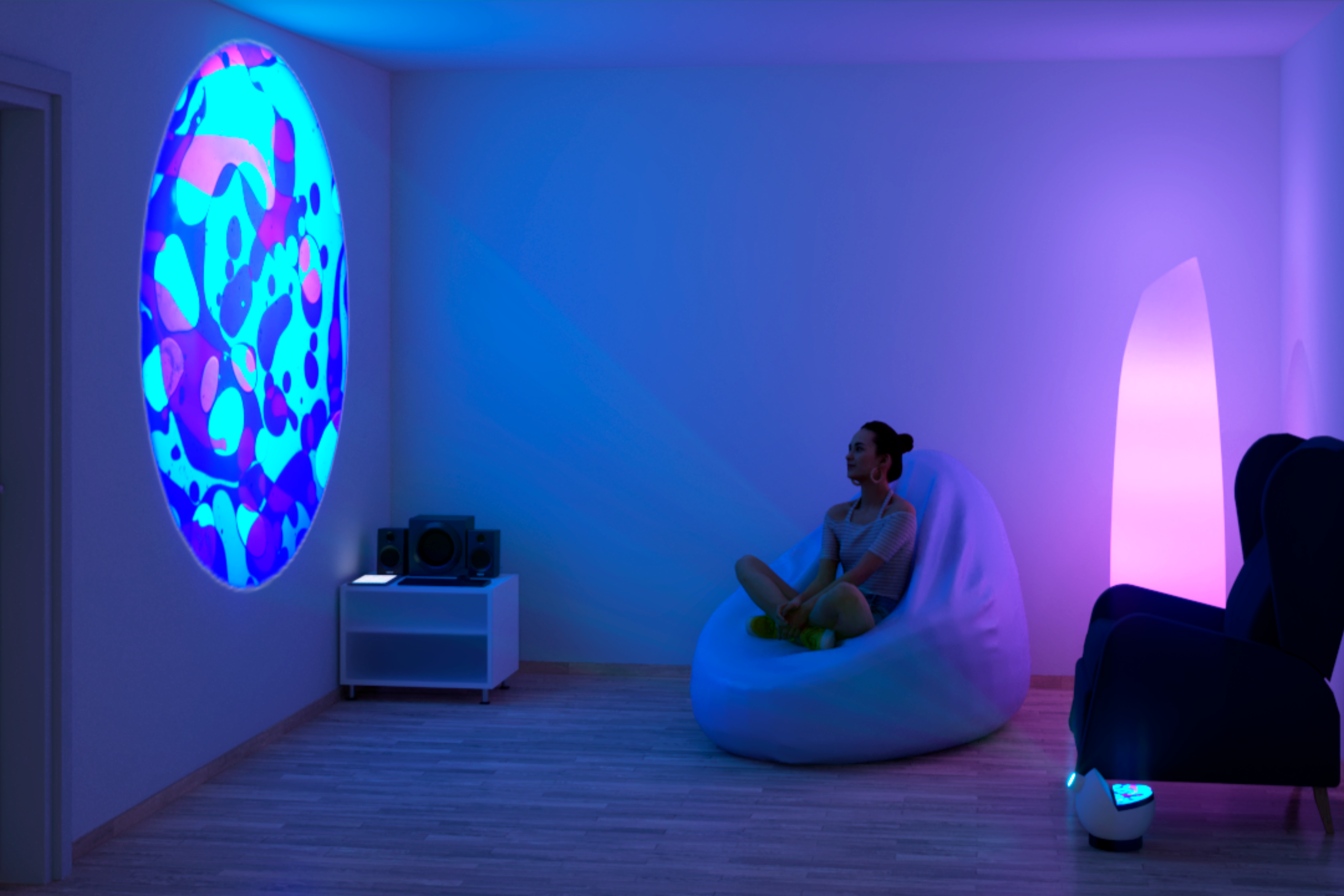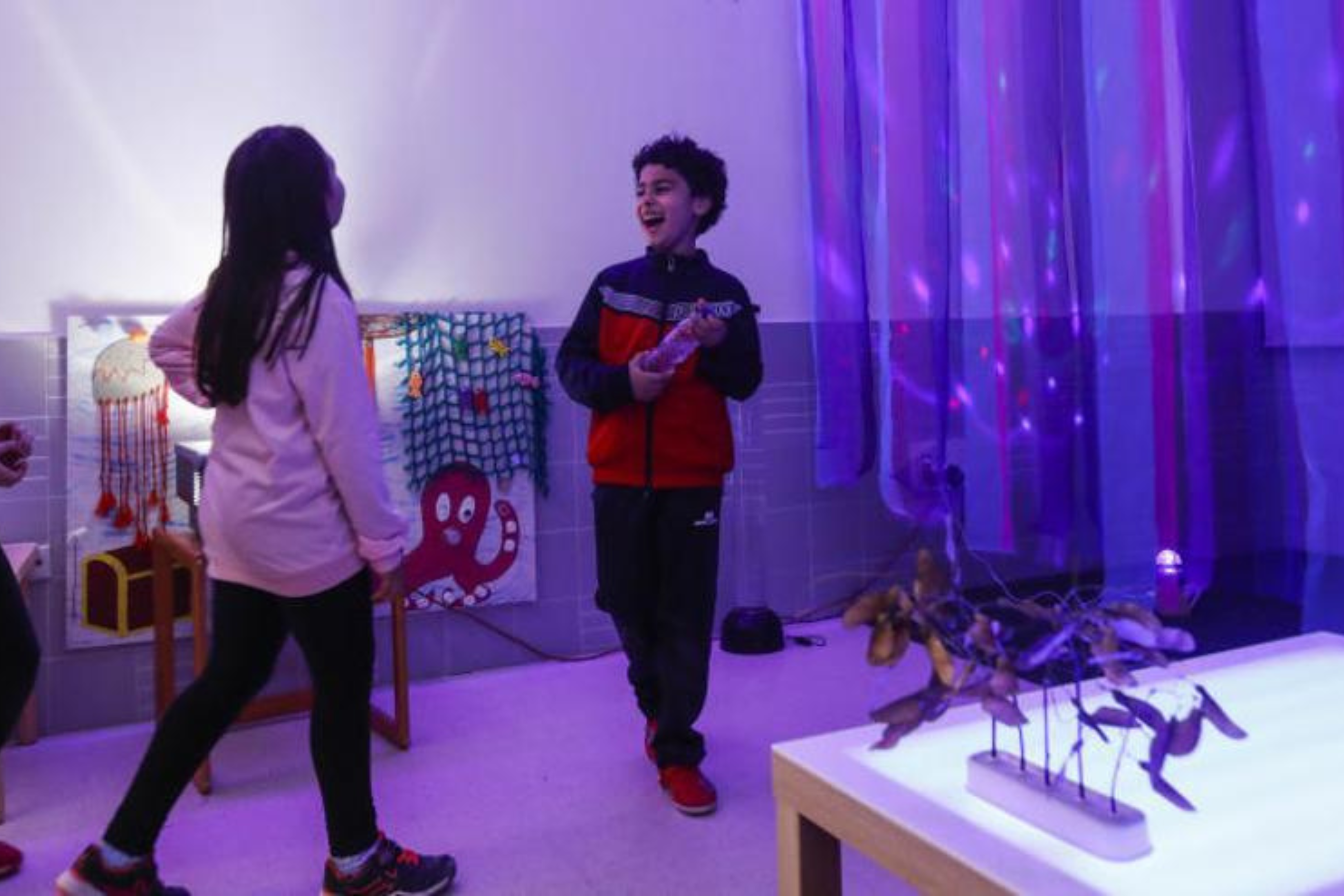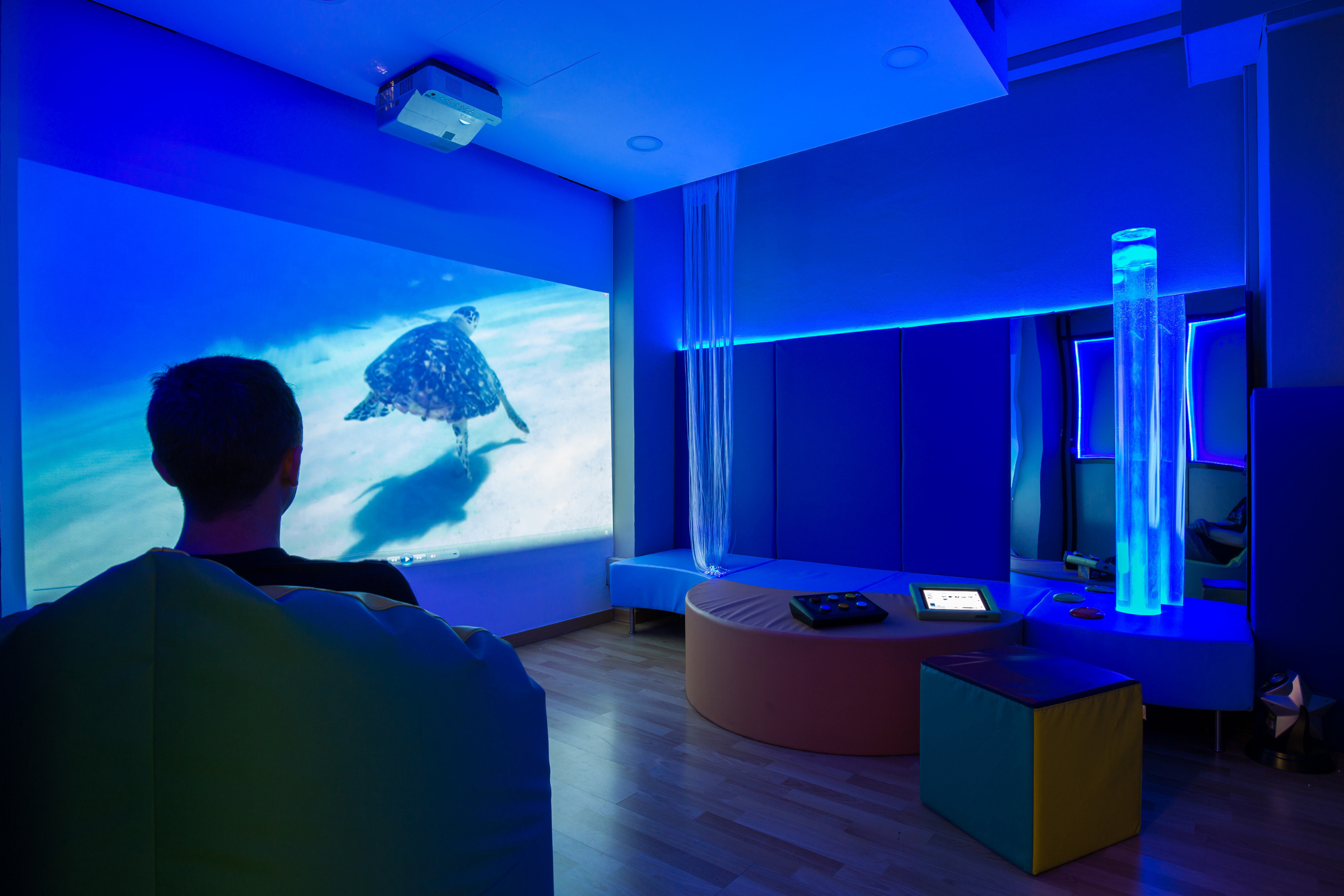Bibiana Escribano
Occupational Therapist. Specialist in pshycomotricity, music therapy and sensory integration.
Read more postsMultisensory rooms are becoming more and more common in educational, therapeutic, and residential settings. Their ability to stimulate, calm, or emotionally support people with diverse needs has turned them into an essential tool.
1. Supporting daily routines in elderly care homes
A sensory environment can accompany different moments of the day with light, sound, and projections: energizing in the morning, calming after lunch, relaxing at sunset. This helps establish healthier rhythms and routines, promotes participation, and strengthens residents’ social connections.
Benefits of a sensory routine for older adults
Encourages participation and movement during active hours
Supports emotional regulation and memory stimulation
Enhances social connection during shared experiences
Reduces stress and agitation, especially in people with dementia
Promotes better sleep hygiene through structured sensory cues
A real example: Multisensory Room at STIMA Embajadores
Located in a senior day care center in Madrid, Spain, this space was designed to support daily routines and therapeutic interventions for older adults through a fully immersive environment. With the help of our own technology and specialized lighting, sound, and audiovisual equipment, the room adapts to each session — whether the goal is stimulation, relaxation, emotional regulation, or memory work.
2. Providing emotional support for teenagers
Some schools already use multisensory rooms as safe spaces where adolescents can learn to manage emotions, reduce anxiety, or simply take a few minutes to disconnect. Adolescence is a stage marked by emotional intensity, academic pressure, and constant change. Many students struggle to find spaces where they can manage stress, reset, and feel safe.
That’s why more schools and universities are turning to multisensory spaces as part of their wellbeing strategy.
Benefits of a multisensory room for teenagers
Reduces stress and anxiety in a safe, non-clinical space
Prevents sensory overload and emotional burnout
Improves attention and classroom engagement
Encourages self-care and emotional autonomy
Fosters inclusion and accessibility
Contributes to a positive and caring school climate

3. Creating immersive learning experiences in children
In educational settings, these rooms allow abstract concepts — like the seasons or continents — to be explored through immersive projections, sounds, textures, and light play. Perfect for all types of learning centers.
Turning abstract concepts into real-life experiences
The four seasons: through projected landscapes, lighting, and sounds
The continents: with music, images, and interactive scenes from around the world
Nature and science: through videos, colors, textures, and cause-effect activities
Storytelling: using light, vibration, and voice to spark imagination and comprehension
By combining projection, sound, light, movement, and interaction, these spaces allow children to see, hear, touch, and feel what they’re learning — making even the most abstract topics easier to understand and remember.

4. Enhancing early stimulation in young children
In early intervention centers, sensory environments are used to stimulate the senses of young children and support cognitive, motor, and communication development from the first months of life.
Why early sensory stimulation matters
Cognitive development: through cause-and-effect interactions, attention, and visual recognition
Motor development: by encouraging movement, posture control, balance, and coordination
Language and communication: with tools that promote engagement and expression
Emotional development: by supporting self-regulation and reducing anxiety

5. Promoting well-being at work for adults
Some companies are beginning to introduce sensory rooms as rest areas for employees. A break with soft lighting, relaxing sounds, or a starry sky can make a big difference in workplace stress.
Why bring a multisensory room to your company?
Reduces stress and anxiety: calming the senses helps regulate emotions and prevent burnout
Improves focus and performance: sensory breaks support mental clarity and reset
Promotes a culture of care: investing in wellbeing sends a clear message — your people matter
Enhances talent retention: supportive environments help people stay and grow
Adapts to any space: Qinera’s technology is scalable, portable, and easy to install

As you can see, the possibilities of these rooms go far beyond traditional therapy. At Qinera, we believe multisensory rooms should adapt to the people who use them — not the other way around. That’s why we design each space according to the specific goals, needs, and context of every user. We’re proud to be part of this transformation, making sensory environments more accessible, personalised, and impactful.
If you want to learn more about the benefits of Multisensory Environments or see how you could adapt it to your space, therapeutic goals, and users, you can send an email to hello@qinera.com.

Occupational Therapist. Specialist in pshycomotricity, music therapy and sensory integration.
Read more posts